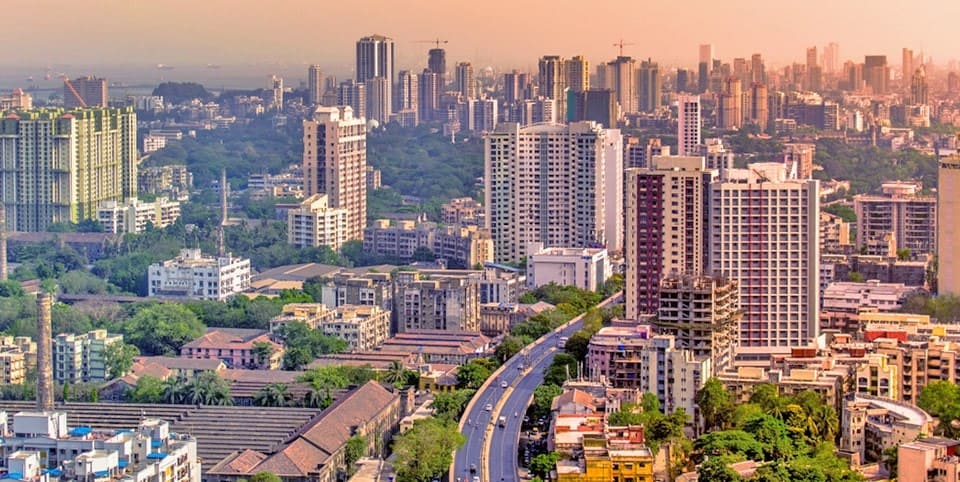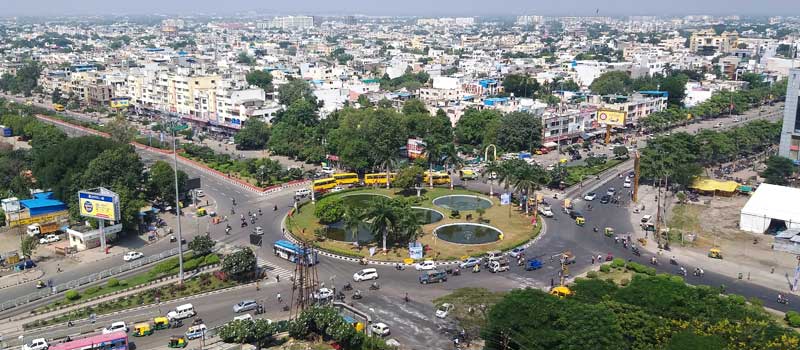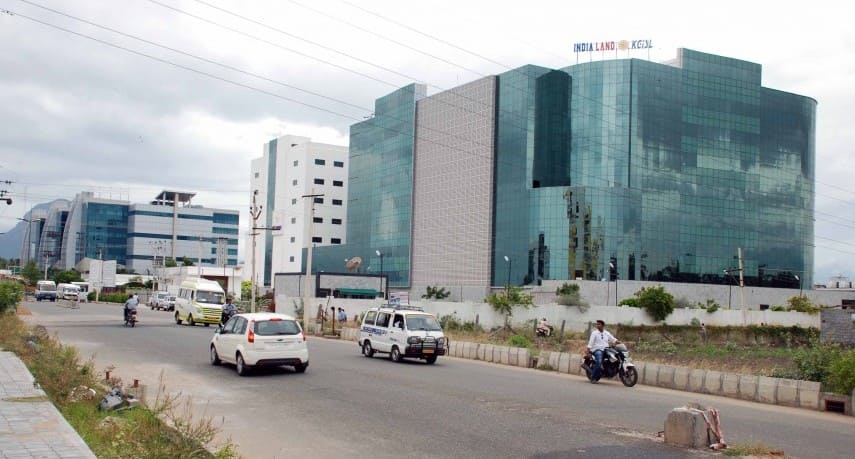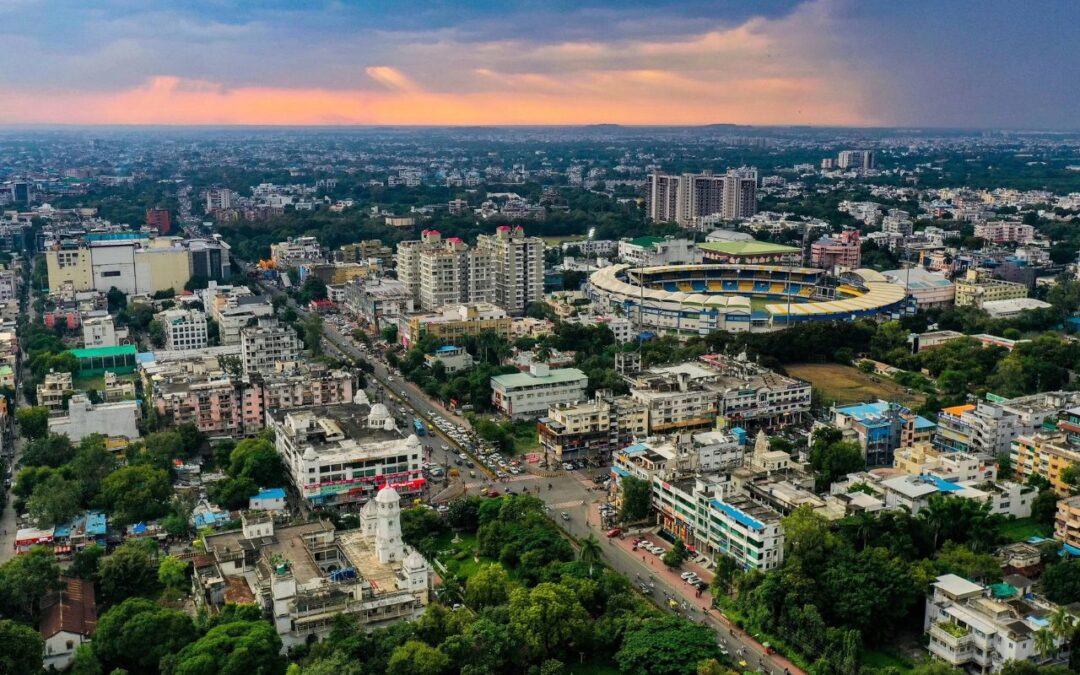Synopsis: This article highlights seven well-planned cities that have been carefully selected and analyzed for their strong potential to deliver high returns over the next five years. These cities are experiencing rapid growth driven by expanding IT and manufacturing sectors, along with major projects undertaken by both global and local giants.
1. Navi Mumbai

By 2025, Navi Mumbai captured the spotlight and was recognized as one of the real estate markets in India with the fastest growth rates, as it experienced a yearly hike in property prices that ranged from 12% to 17.4%. The city boasts several high-end shopping malls and large retail outlets. Average residential property prices range from ₹9,000 – ₹16,000 per sq ft. Key micro markets include
| Area | Avg price per sq ft | Price trend YoY |
| Taloja | ₹6,500- ₹8,500 | 15% |
| Ulwe | ₹9,000-₹12,000 | 14% |
| Seawoods | ₹12,500 – ₹15,000 | 10% |
Infrastructure Catalysts
- The Navi Mumbai International Airport (57% complete, expected operational post October 2025) will boost both residential and commercial demand in surrounding areas like Ulwe, Dronagiri.
- The Mumbai Trans Harbour Link (MTHL) is live now. Travel time between South Mumbai and Navi Mumbai has profusely been cut down from 45 minutes to merely 20 minutes since January 2024.
- The Panvel – Karjat rail project (67% done) will offer a reduction of over 30 minutes in travel time.
Best for: The end users will wonder if they have found a place where not only a rich lifestyle is but also great capital appreciation takes place; the investors will see that such infrastructural development will yield short-to-medium term returns.
2. Noida (Uttar Pradesh)

Noida is positioned in the premium sector at an average property price range of ₹9,200-₹12,773 per sq. ft. as estimated in 2025. Property rates have experienced a sharp rise, with a 69% jump in new home launches across NCR in 2025
| Area | Avg per sq ft | Growth rate |
| Yamuna Expressway corridor | ₹6,500 | 16-18% |
| Sector 150 | ₹12,000 | 15-18% |
| Sector 94 | ₹10,900 | 12-15% |
| Sector 62 | ₹9,200 | 11-15% |
Infrastructure Developments
- The Jewar International Airport will dramatically boost property demand in sectors like 150 and Noida Extension, and raising IT parks
- The Delhi Metro expansion now connects Noida to Greater Noida and Delhi,
Best for: First time home buyers, the investors with a limited budget, and the corporate professionals that are looking for a place to live that is both affordable and well-connected; the medium-term capital appreciation play.
3. Gandhinagar (Gujarat)

Gandhinagar has experienced an incredible growth in property rates of 120% from 2018 to September 2024, thus becoming India’s fastest growing city in terms of this metric. Current residential pricing stands at ₹5,500- ₹7,500 sq ft for apartments, with growth rate 8-10% annually expected to continue. The Gujarat International Finance Tec-City (GIFT) has transformed Gandhinagar’s real estate narrative, attracting global banks, stock exchanges, fintech firms, and IT companies, which creates more jobs. GIFT City itself has seen 30% price appreciation in 18 months.
Infrastructure & Planning: The Ahmedabad-Gandhinagar Metro provides, Gandhinagar- Mumbai Bullet Train, The Sabarmati Riverfront Development all projects create recreational spaces and enhance urban quality of life.
Best for: long term wealth builders targeting steady appreciation; investors seeking exposure to India’s first international financial hub; NRIs and NRI origin professionals.
Also read: Latest GCC Launches in India: Key Cities Fueling Commercial Real Estate Demand in 2025
4. Indore (Madhya Pradesh)

India’s Cleanest City, Indore’s real estate market is experiencing unprecedented transformation, with property prices averaging ₹5,550-₹6,600/sq.ft in key areas. Remarkably, guideline rates have surged 26% on average, with specific micro-markets registering 51-190% increases, reflecting institutional confidence. Key localities like Super Corridor, Rau, and Nipania showcase prices of ₹4,350-₹6,600/sq.ft with annual appreciation of 9-10%, with Pipliyahana leading at 140.9% three-year growth.
Infrastructure development: India’s Smart City Mission, The city’s status as India’s cleanest city for multiple consecutive years enhances livability perception. Projected property value growth of 30-40% in emerging zones along the M3R (Multi-Model Metro Ring Road) reflects strong investor optimism. The major projects are IT sector expansion, multi-modal logistics, Indore-Ujjain Highway, Riverfront redevelopment, this project that boost the real estate growth
Best For: High-growth potential seekers; investors targeting 9-26% annual appreciation; those seeking significant leverage from infrastructure projects; medium-term to long-term wealth creation
5. Coimbatore (Tamil Nadu)

The IT sector in Coimbatore has been growing tirelessly, and many top firms already have their presence in the city. The demand for the IT sector has greatly increased during the last year and above all, some of the biggest spaces in the city have been seized by the likes of Infosys, Mikro Graefio, Tech Mahindra and HDFC. On top of that, the smaller IT companies have also been occupying units with sizes varying from 20,000 to 50,000 sq. ft. Key zones like Peelamedu, Saravanampatti, and Vilankurichi have achieved stronger appreciation (ranging 24.7% annually in fast-developing areas). Eastern Coimbatore is expected to see 10-15% residential price increases in 2025, supported by expanding commercial zones and new industrial parks.
Infrastructure Development: The Coimbatore Metro Rail Project, NH-544 expansion and major flyover projects (including Avinashi Road flyover) are reducing travel times and improving city connectivity. Under the Smart City Mission, Coimbatore is upgrading roads, drainage systems, public spaces, street lighting, waste management, and water supply across both central and suburban areas.
Best For: Conservative investors seeking steady returns; professionals targeting quality of life with urban amenities; those seeking affordable entry with moderate appreciation; medium-to-long term wealth building.
6. Bhubaneswar (Odisha)

The Bhubaneswar office market was inactive in the first half of 2025 due to the very limited demand as well as supply. The absorption of commercial space was around 1.0 lakh sq. ft., where many small companies are entering Bhubaneswar and starting operations. The commercial real estate market in Bhubaneswar is primarily influenced by the IT/ITeS, BFSI, and the industrial sectors. During the first six months of 2025, ITC and Nippon India were the two major companies leasing office space in the city. The average rents in the prime commercial areas range from INR 60 to 150 per sq. ft. per month.
Infrastructure development: Bhubaneswar was ranked No. 1 in India’s Smart City Challenge, the city is implementing a comprehensive ₹8,179 crore New City Development Scheme approved by Odisha Cabinet in September 2025, which will develop 800 acres across Gothapatna, Malipada, and Daspur into a modern transit-oriented township.
Best For: Long-term wealth builders; rental income seekers; those targeting 2-4% annual rental yields; professionals and students seeking affordable living; investors with extended investment horizons.
7. Amaravati

Amaravati is a greenfield urban development project that has a great ambition to become a world-class capital. Recently, the city has witnessed a real estate revival, and the prices of land have gone up by 60-100% due to the government policy changes.
Major infrastructure projects: The development of growth corridors, and World Bank financing is costing ₹81,317 crore. The backbone of the city consists of a thorough road system made up of 360 km of main roads and 1,500 km of internal ones, concealed facilities for water, sewage, electricity, and telecommunications, and the like including government offices, residential areas, and flood control systems.
Best for: Speculative long-term investors, NRIs, and institutional players who want to be part of a high-growth capital city with maximum potential over a 10-15 year horizon.
Conclusion
These seven cities represent the future of planned urban development in India, each backed by significant government investment, strategic infrastructure placement, and strong economic fundamentals. Navi Mumbai leads in infrastructure maturity and immediate returns, while cities like Indore and Amaravati offer higher growth potential with corresponding risk profiles.
Written by Yatheendra N



